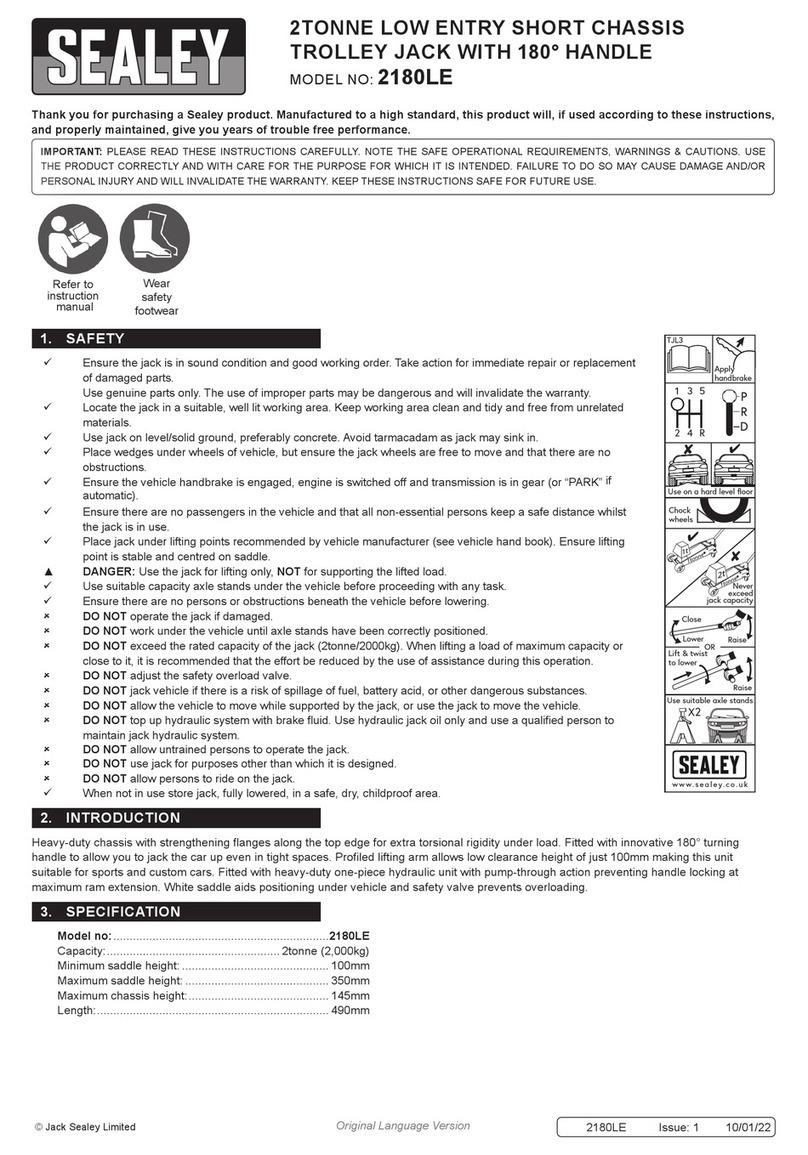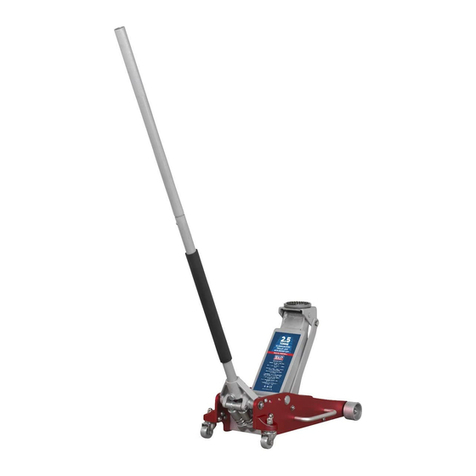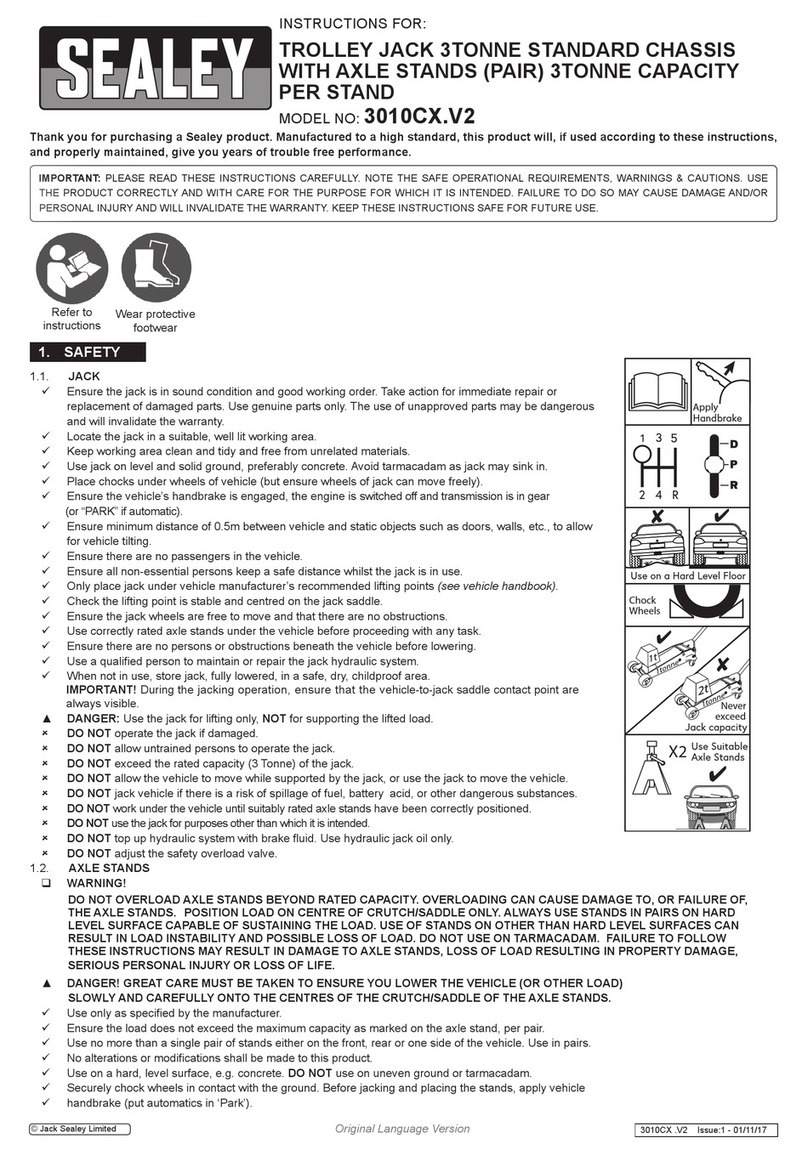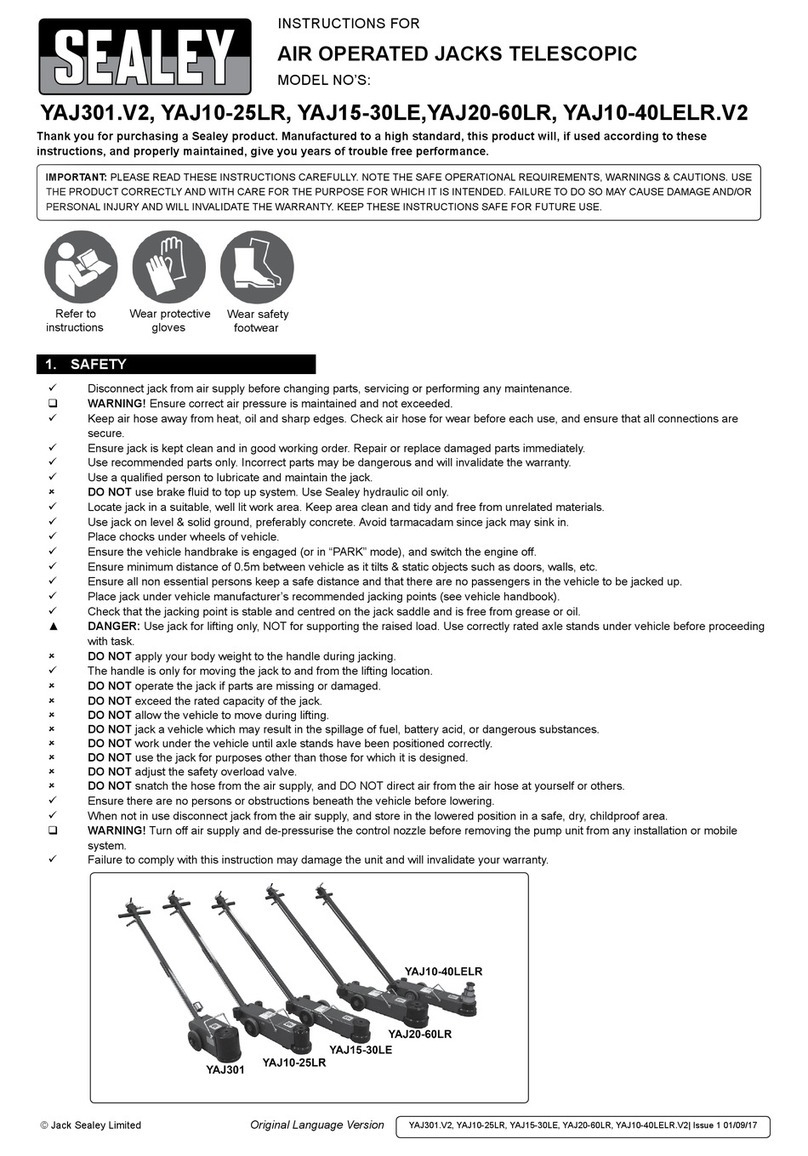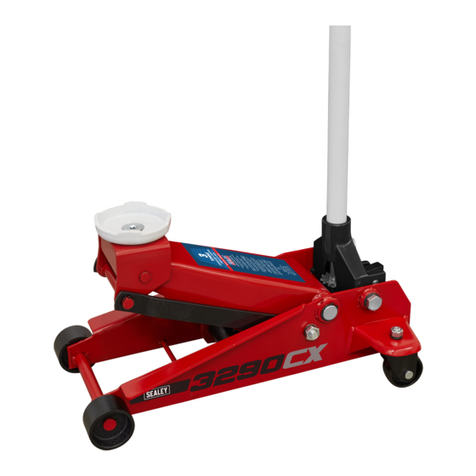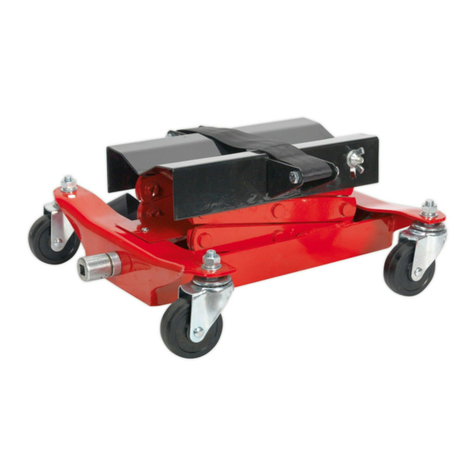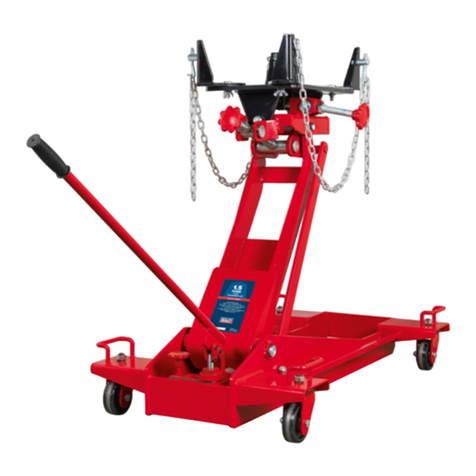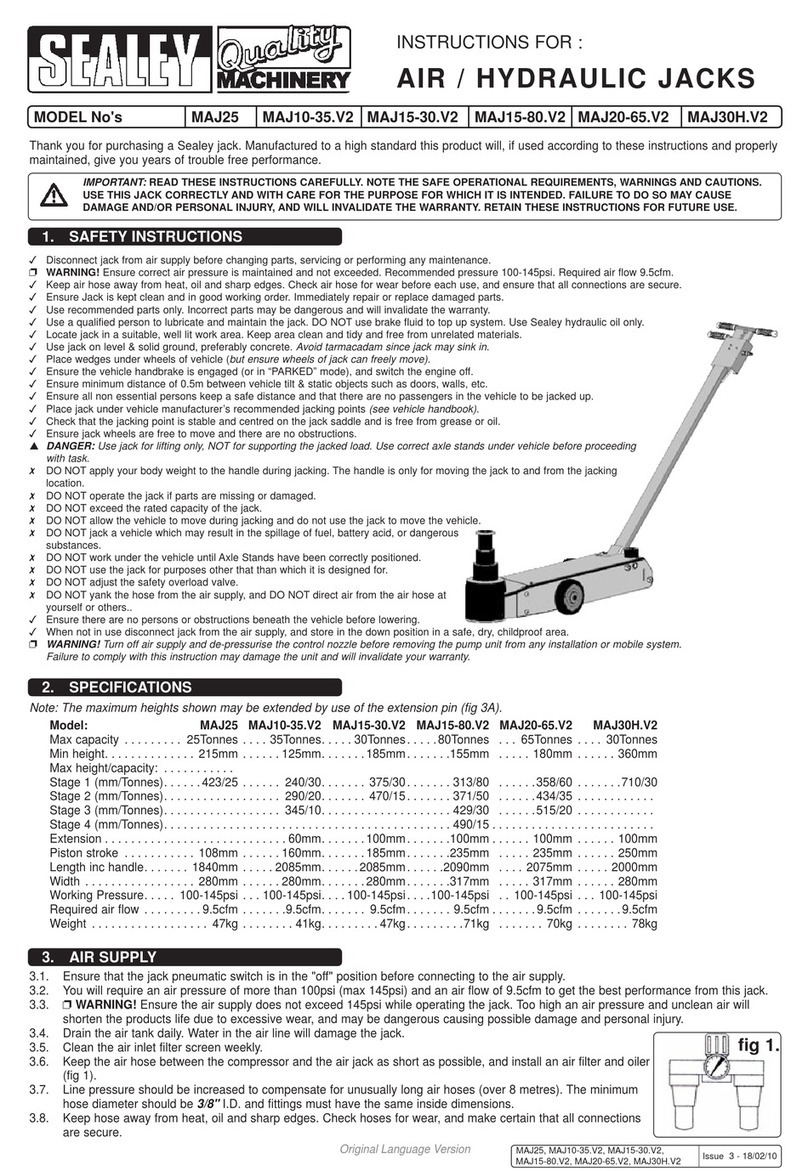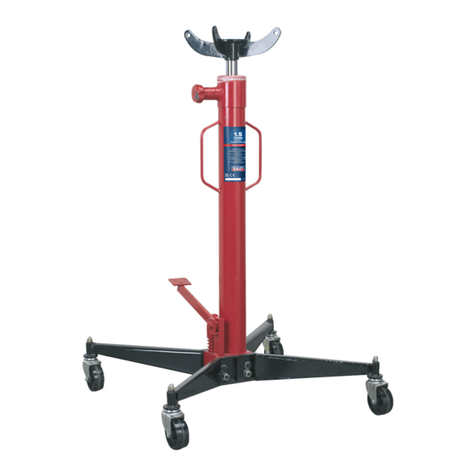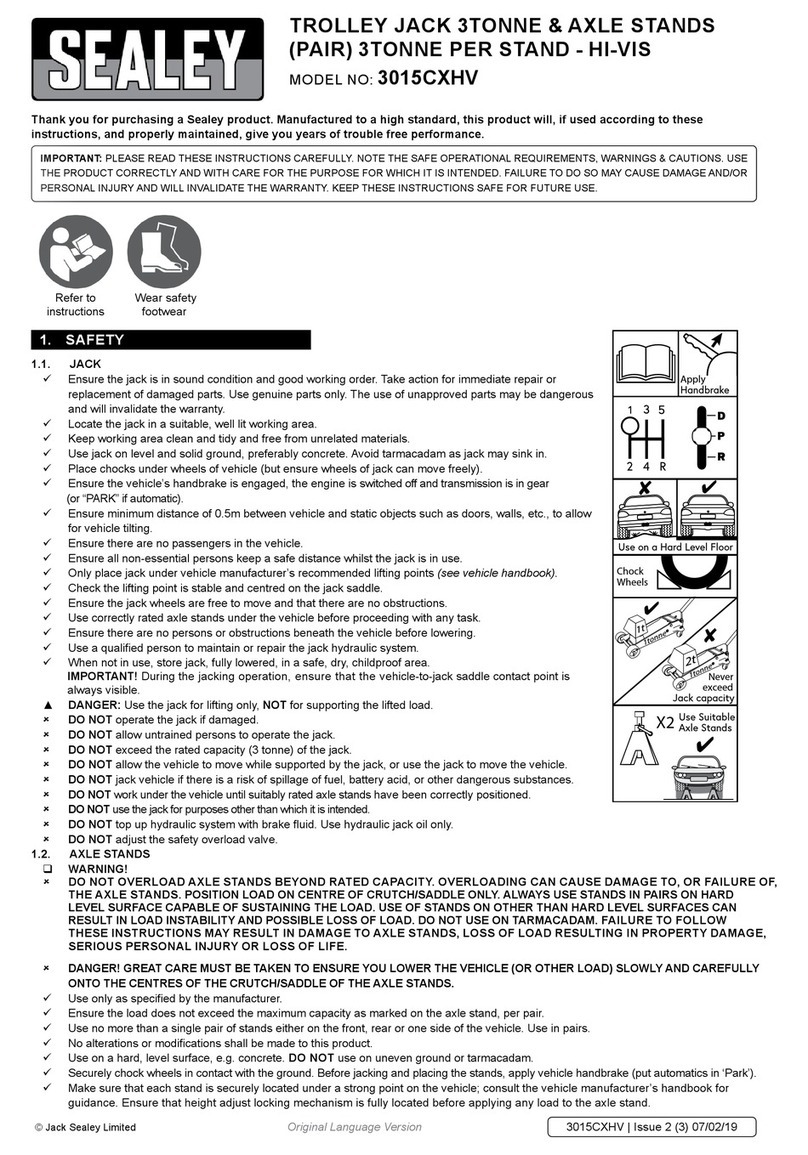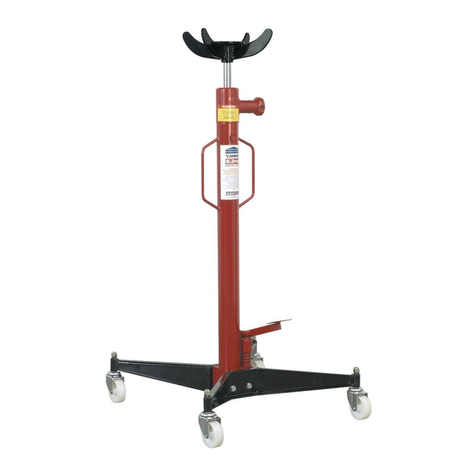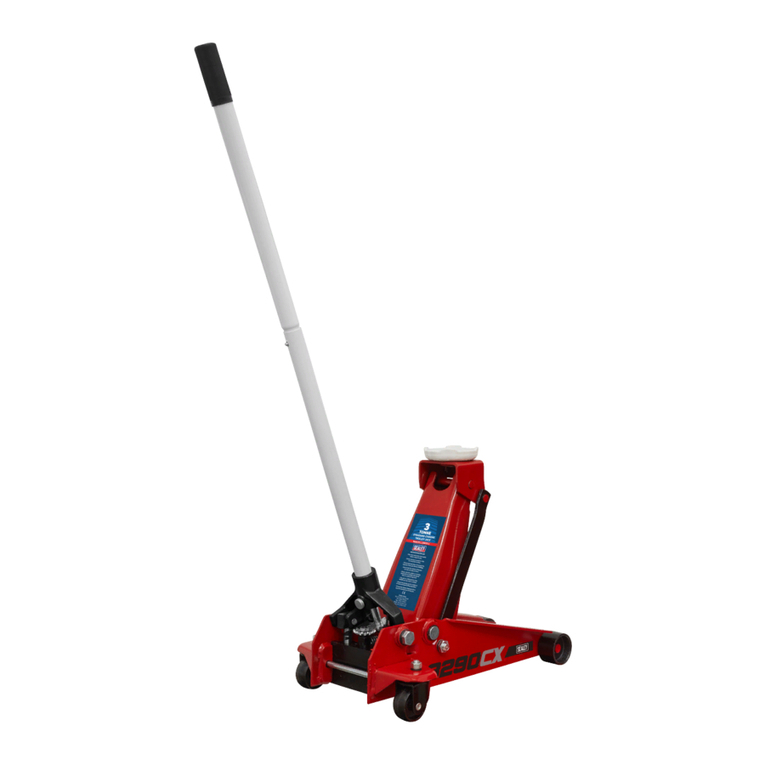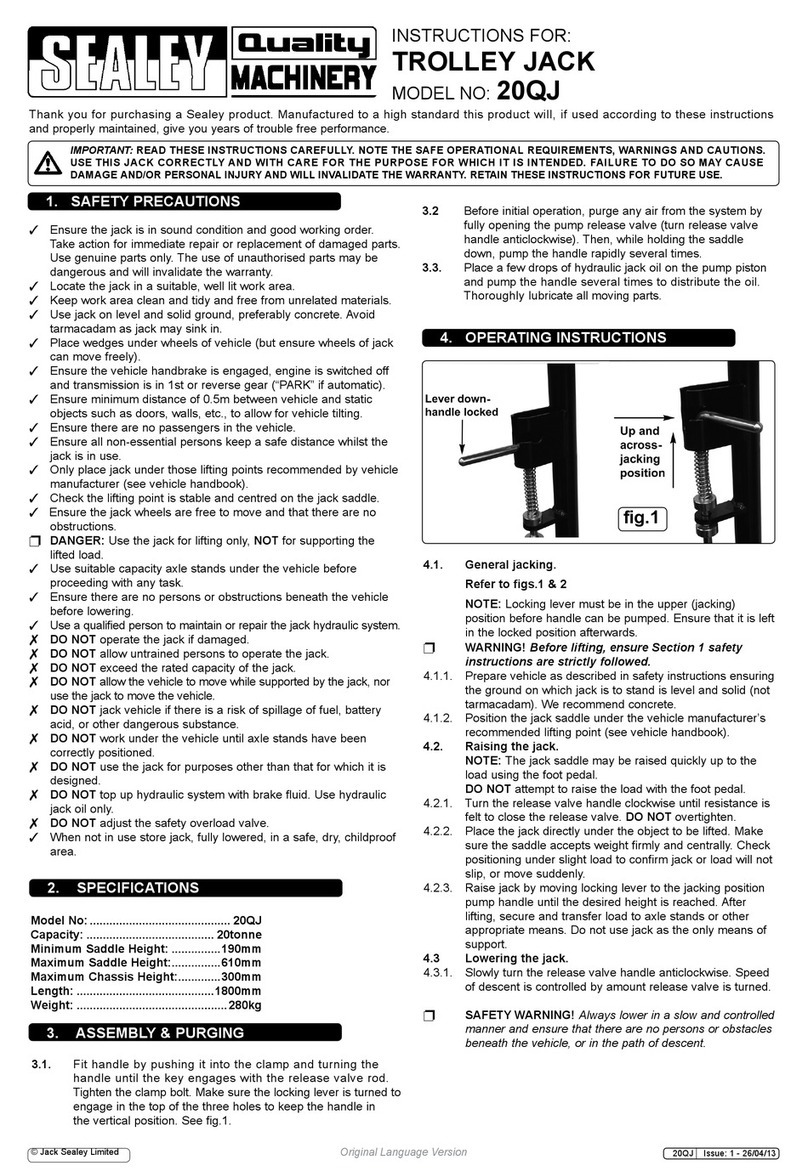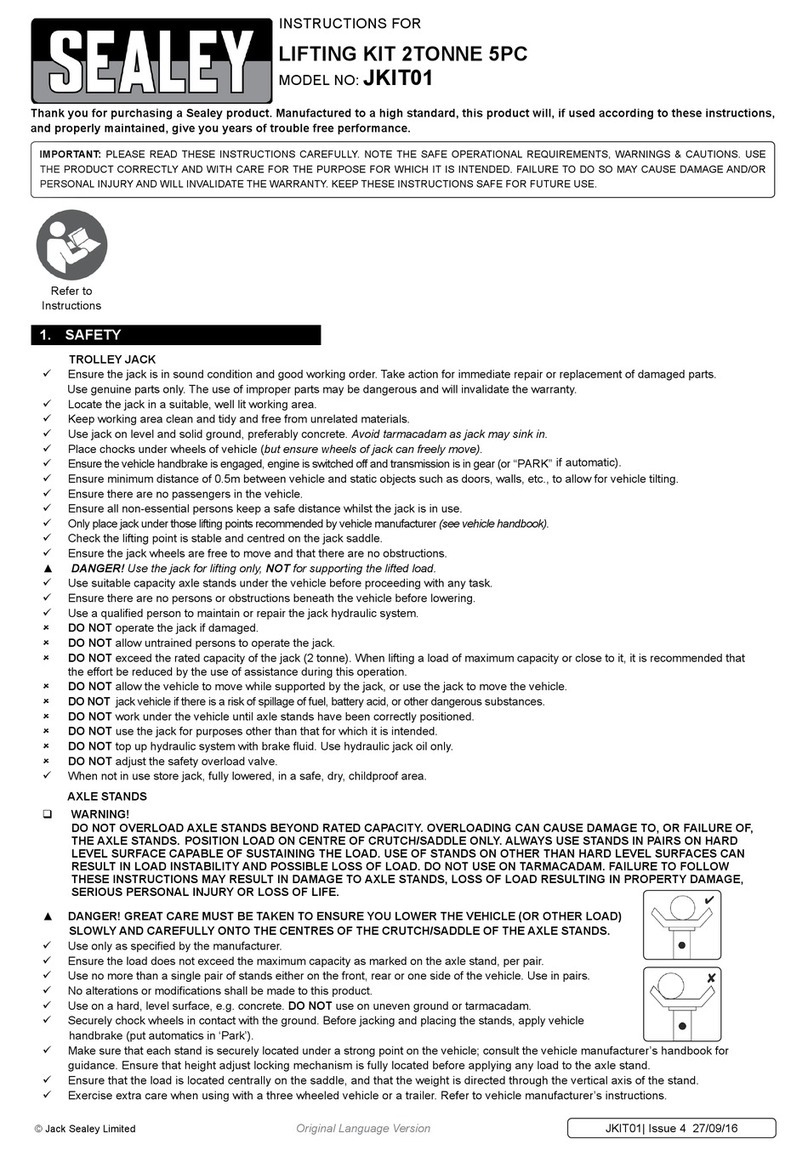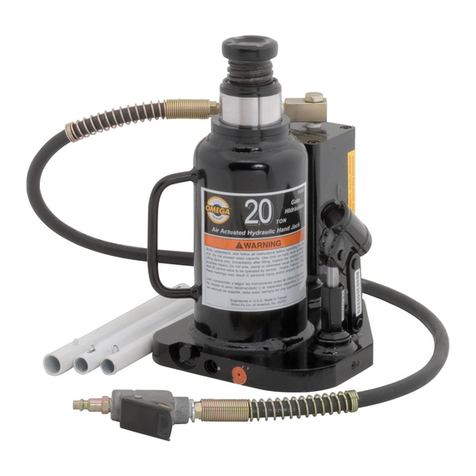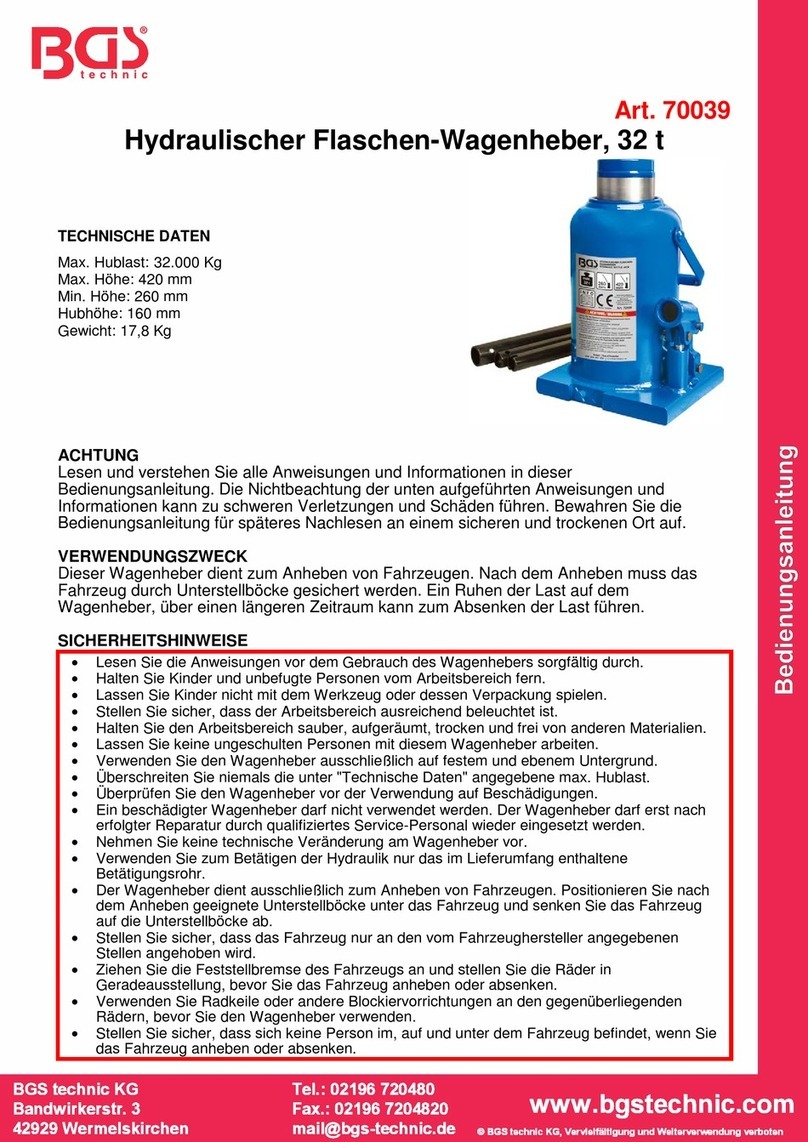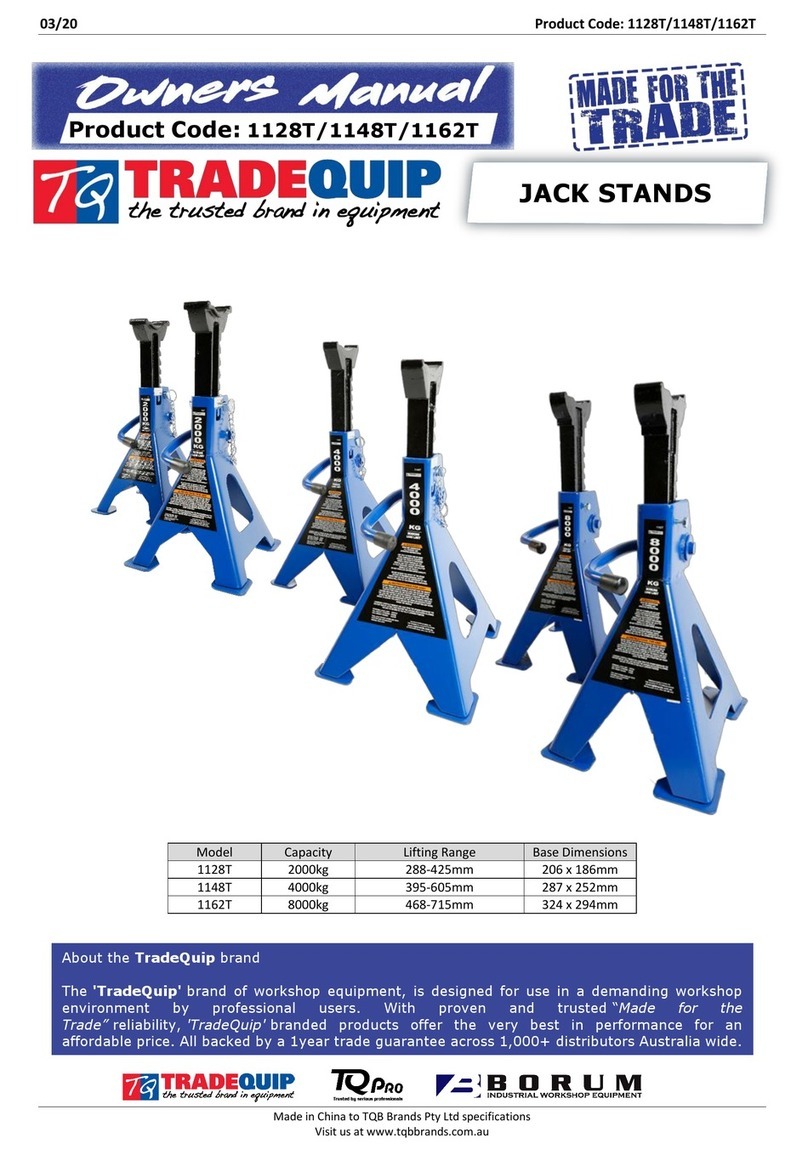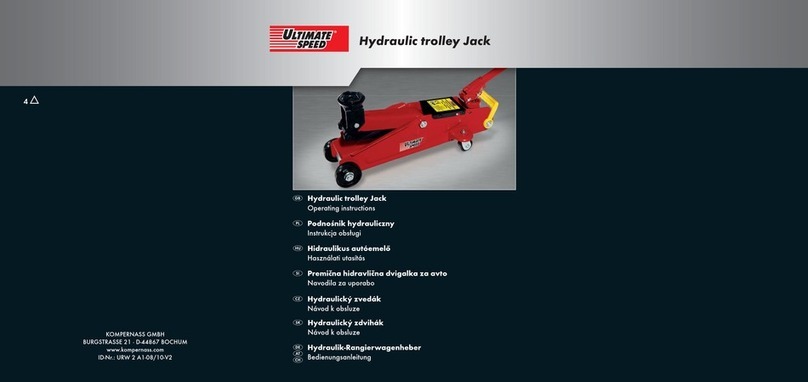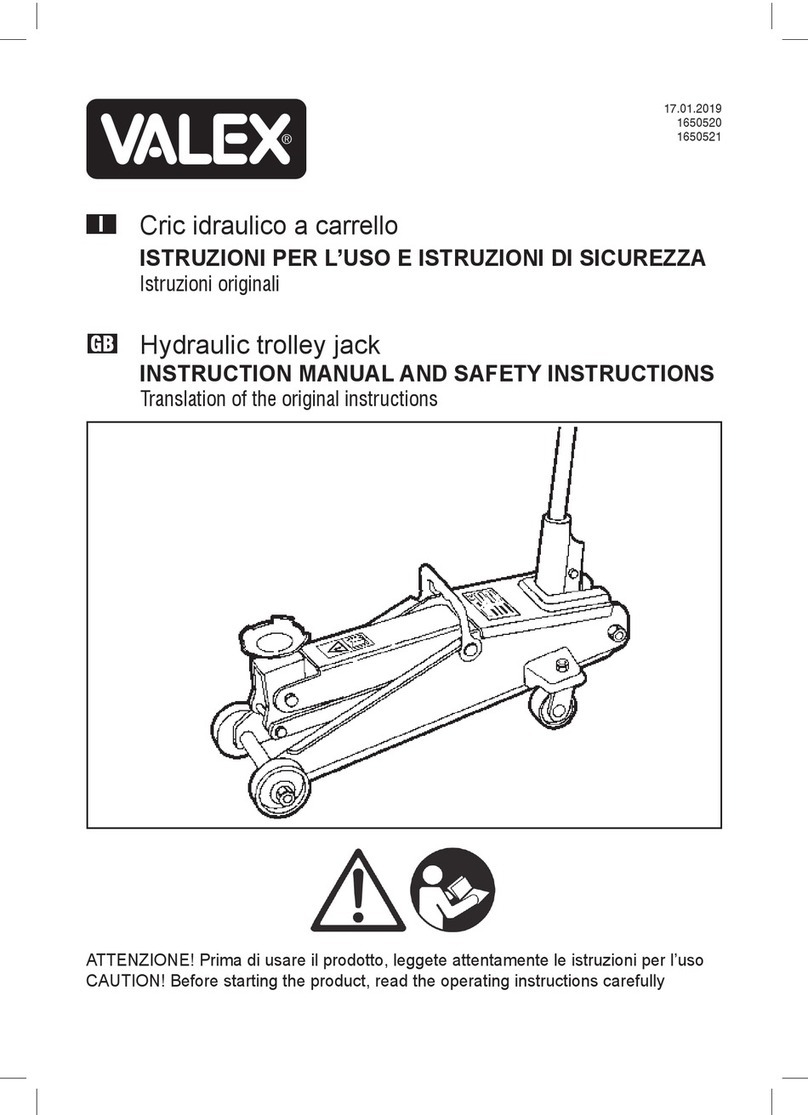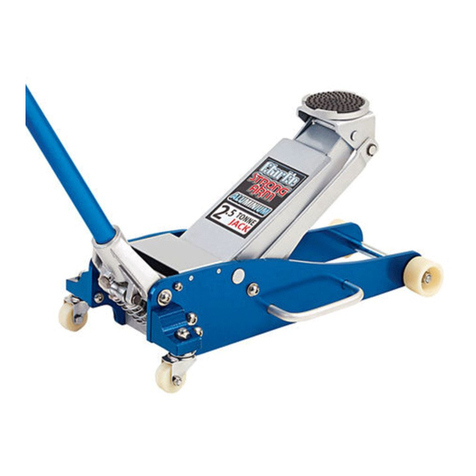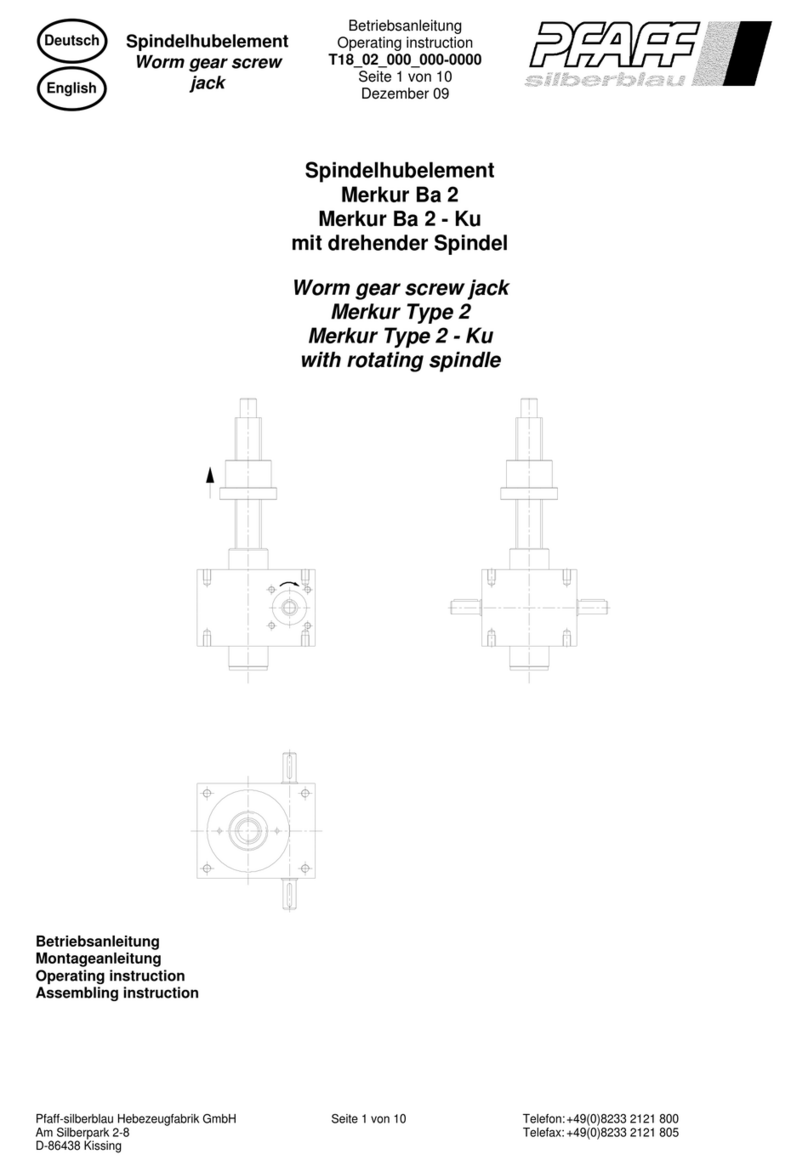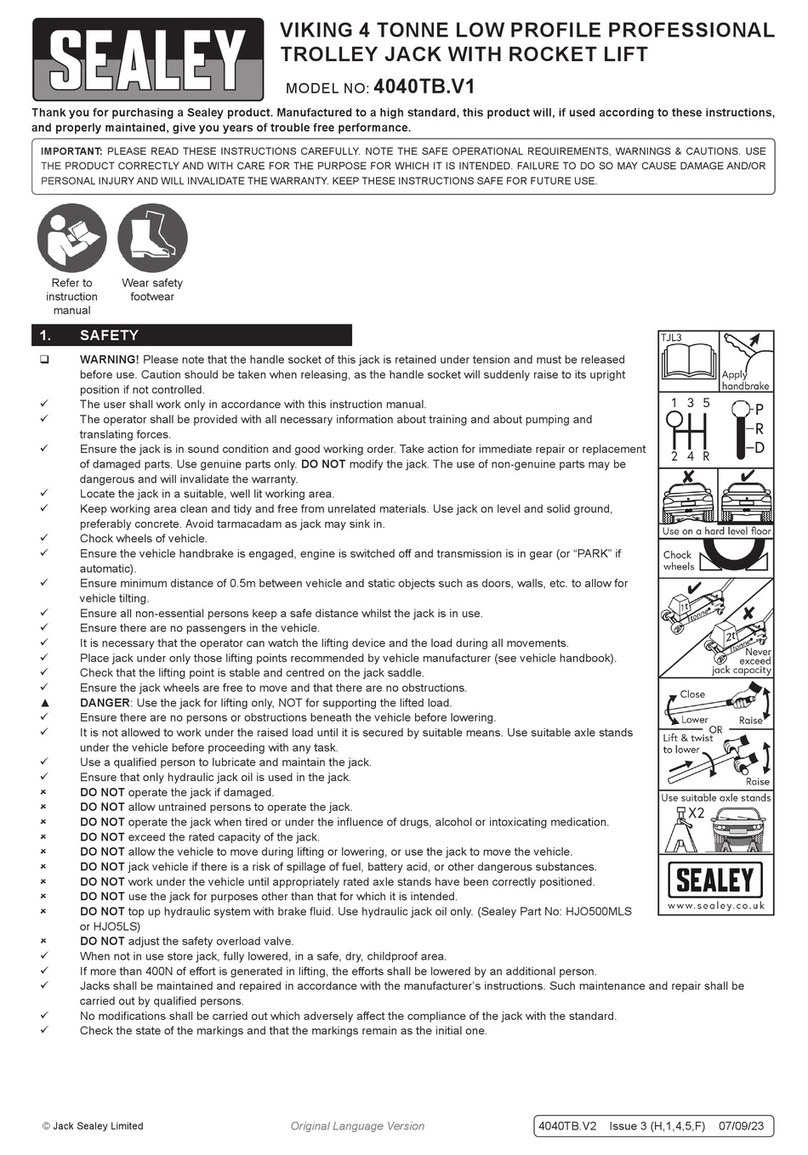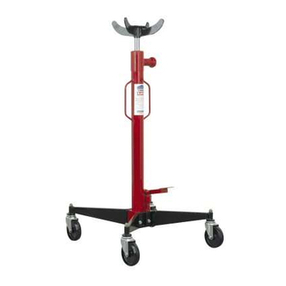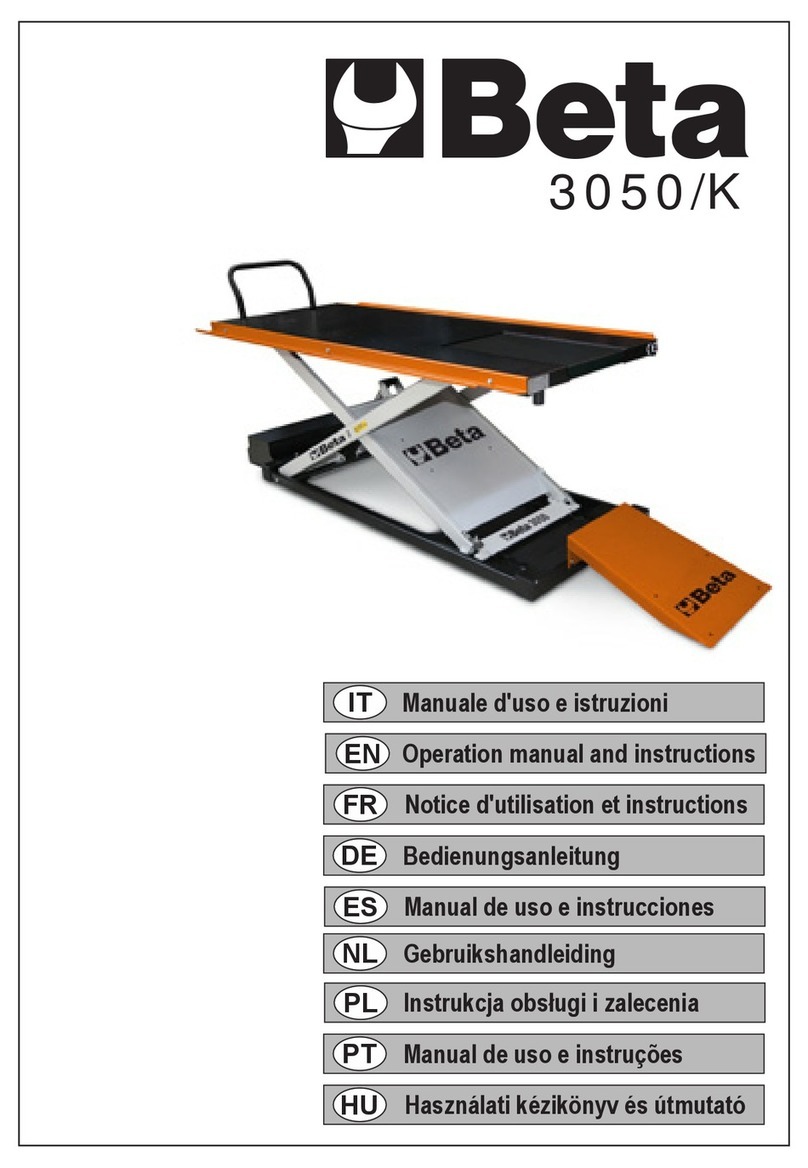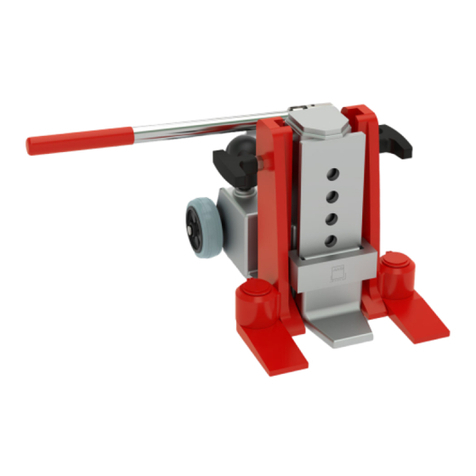
5. OPERATION
5.1. Air sometimes gets into the hydraulic system, causing poor lifting
performance. Before initial operation, to purge any air from the system
open the release valve at the top of the jack handle by turning it anti-
clockwise. Place a weight on the saddle and pump the jack handle rapidly
several times, then close the release valve.
5.2. RAISING THE JACK
5.2.1. Turn the handle knob clockwise until resistance is felt to close the
release valve. DO NOT over tighten
5.2.2. Place jack directly under object to be lifted. Make sure weight is positioned
centrally.Checkpositioningunderslightloadtoconrmjackorloadwillnotslip.
5.2.3. Raise jack by pumping handle until desired height is reached.
5.2.4. After lifting to required height support on axle stands.
5.3. LOWERING JACK
5.3.1. Slowly turn handle knob anti clockwise. Speed is controlled by amount release
valve is turned.
8DO NOT lower the jack too fast so as to loose control.
6. MAINTENANCE
6.1. CHECKING HYDRAULIC OIL LEVEL
6.1.1. Open release valve (turn handle knob anti clockwise) and push ram to its lowest position.
6.1.2. Remove oil filler plug. see fig.2.
6.1.3. Fill with clean hydraulic jack oil. DO NOT use hydraulic brake fluid.
6.1.4. Re-fit oil filler plug.
6.2. LUBRICATION
6.2.1. Add lubricating oil to all moving and pivoting with light oil once or twice a month, depending on frequency of use.
7. trotTROUBLESHOOTINGtt
Original Language Version
© Jack Sealey Limited
g.2
PROBLEM POSSIBLE CAUSE REMEDY
Jack will not lift
the load
Jack does not lift
high enough or
feels “spongy”
Jack lifts poorly
Jack lifts but will
not hold load
Jack will not lower
completely
Jack does not
lower at all
1) Be sure to use jack with adequate capacity
2) Top up oil level
3) Check and close release valve
4) Open release valve and pump the handle a few times. Close valve and re-try
5) Clean and replace oil
6) Replace packing
1) Top up oil level or remove excess oil
2) Return jack to local service agent
3) Open release valve and pump the handle a few times. Close valve and re-try
4) Check and close release valve
1) Replace packing and/or clean valves
2) Replace oil
3) Open release valve and pump the handle a few times. Close valve and re-try
1) Check and close release valve
2) Lower jack, close release valve. Place foot on front wheel and pull up lifting arm to it's full height by hand
Open the release valve to lower arm
3) Open release valve and pump the handle a few times. Close valve and re-try
4) Replace packing or contact local service agent
5) Replace packing
1) Oil all external moving parts
2) Replace rod or contact local service agent
3) Replace damaged parts or contact local service agent
4) Open release valve and pump the handle a few times. Close valve and re-try
5) Check and fully open release valve
6) Replace spring or contact local service agent
1) Check and fully open release valve
1) Overloaded
2) Oil level low
3) Release valve not correctly closed
4) Air in system
5) Piston rod not functioning
6) Packing worn or defective
1) Oil level too high or too low
2) Worn seals
3) Air in system
4) Release valve not closed
1) Pump packing or valves malfunctioning
2) Oil is dirty
3) Air in the system
1) Release valve partially open
2) Dirt on valve seats
3) Air in system
4) Faulty seals
5) Packing worn or defective
1) Unit requires lubrication
2) Piston rod bent or damaged
3) Jack frame/link system distorted due
to overloading/poor positioning
4) Air in system
5) Release valve partially open
6) Jack spring damaged
1) Release valve still closed
Sealey Group, Kempson Way, Suffolk Business Park, Bury St Edmunds, Suffolk. IP32 7AR
01284 757500 01284 703534 sales@sealey.co.uk www.sealey.co.uk
Note: It is our policy to continually improve products and as such we reserve the right to alter data, specifications and component parts without prior
notice. Please note that other versions of this product are available. If you require documentation for alternative versions, please email or call
our technical team on technical@sealey.co.uk or 01284 757505.
Important: No Liability is accepted for incorrect use of this product.
Warranty: Guarantee is 12 months from purchase date, proof of which is required for any claim.
ENVIRONMENT PROTECTION
Recycle unwanted materials instead of disposing of them as waste. All tools, accessories and packaging should be sorted, taken to
a recycling centre and disposed of in a manner which is compatible with the environment. When the product becomes completely
unserviceable and requires disposal, drain any fluids (if applicable) into approved containers and dispose of the product and fluids
according to local regulations.
3000HLC.V2 Issue:1 - 01/04/20
